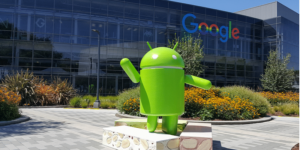Just as the prolonged lockdown restrictions were eased and the number of COVID-19 cases began to drop, India faced a massive, devastating second wave of the pandemic that caused major loss of life.
Businesses faced disruptions once again just as they were recovering from the initial impact of the pandemic, and the logistics industry was no exception. Post COVID-19, the Indian logistics industry has undergone some significant changes..
In fact, it is continuing to evolve, and these changes are likely to last for the foreseeable future. That said, as the year draws to an end, here’s how the industry transformed and what we can expect in 2022.
2021: The dawn of a new era for logistics
A dramatic shift in shopping habits
On the consumer front, there was a large-scale shift in behaviour, preferences, and expectations. With strict lockdown measures and the general apprehension to go to physical stores to purchase items, including essentials, consumers across the country increasingly began leaning towards online shopping.
Given the increasing internet proliferation, smartphone usage, and digitisation from businesses, online shopping has proven to be the most convenient option for consumers who are still apprehensive about physical in-store shopping.
Right from the product descriptions to the payment gateways and logistics/shipping, online shopping offered easy access and convenience amidst the lockdown restrictions.
Augmented tech infrastructure
The shift in shopping habits and efficient logistics services have mainly been possible thanks to advancing technological infrastructure. Technology has grown leaps and bounds over the years, especially the past couple of years, making what was previously unimaginable a reality today.
The industry has been quick to integrate cutting-edge technologies such as AI (artificial intelligence), ML (machine learning), IoT (Internet of Things), and Big Data into its daily operations to enhance efficiency and seamlessness from the logistics standpoint.
Features like real-time tracking, digital logbooks, chatbots to address customer queries, automated warehousing, etc., are all possible only with technology.
2020 and 2021 have undoubtedly been an accelerator for technology. Today, with tech-powered operations, logistics continues to be one of the fastest-growing industries despite the pandemic disruptions.
The focus on last-mile deliveries and the growing warehousing demand
With evolving technology and consumer preferences, logistics platforms, too, have rearranged their operations. Placing customer-centricity at the heart of their strategy, logistics players are prioritising last-mile deliveries. Hassle-free, efficient last-mile deliveries are one of the keys to customer satisfaction.
Furthermore, with cut-throat competition in the fast-growing D2C market, sellers/brands have sought out third-party platforms that provide an array of services, including warehousing and fulfillment. In fact, warehousing continues to face immense demand from the D2C sector, especially small and medium sellers.
Now, the million-dollar question is, what’s in store for 2022?
The D2C wave
Recent years have seen a growing number of businesses take the D2C business route. Given its greater and more convenient consumer reach, the D2C business model almost appears to be an obvious choice for small and medium businesses/sellers.
As per the report of KPMG India currently has over 800 D2C brands and the sector is projected to touch $100 billion in 2025 from the current $44.6 billion.
As the number of consumers shopping online continues to skyrocket, more and more D2C brands will begin to realign their business strategies and adopt the omnichannel approach for better customer engagement and business growth.
Additionally, as the D2C market continues to gain traction, brands in the segment will increasingly seek end-to-end logistics and fulfillment services. After all, one of the stepping stones to success for a D2C brand lies in its ability to reach customers through quick, frictionless shipments and other logistics services.
Increased focus on branded and personalised experiences
As customer preferences evolve, personalisation has become one of the most popular and effective ways for a brand to reach a customer. The ‘one size fits all’ approach is long gone. Today, with technology being a part of every aspect of business operations, it is easier to analyse the personal preferences of consumers.
Using this, logistics platforms are now providing customers a personalised shipping experience that caters to their preferences and requirements, and 2022 is bound to see increased personalisation on all fronts.
Additionally, players are focused on making last-mile deliveries more efficient and reducing the delivery time. This will make for an impeccable customer experience and improve satisfaction.
Bottomline
The logistics industry has undergone a massive evolution and is continuing to do so. Multiple factors such as technology, reforms, and the efforts of players are changing the landscape of logistics. That said, we can certainly say that the sector is poised to grow further in 2022 and a bright future lies ahead.
(Disclaimer: The views and opinions expressed in this article are those of the author and do not necessarily reflect the views of YourStory.)



![Read more about the article [Funding alert] CareerLabs raises $2.2 M from Rocket Internet’s VC fund GFC and angel investors](https://blog.digitalsevaa.com/wp-content/uploads/2021/04/Imagegnw7-1617603330689-300x150.jpg)



![Read more about the article [Funding alert] MPOWER Financing raises $100M from multiple investors](https://blog.digitalsevaa.com/wp-content/uploads/2021/07/85080f7239feebc4809b9e4a19856740eed3465e491dd8f6de1a57d885e6c67d-1625201880859-300x150.png)


